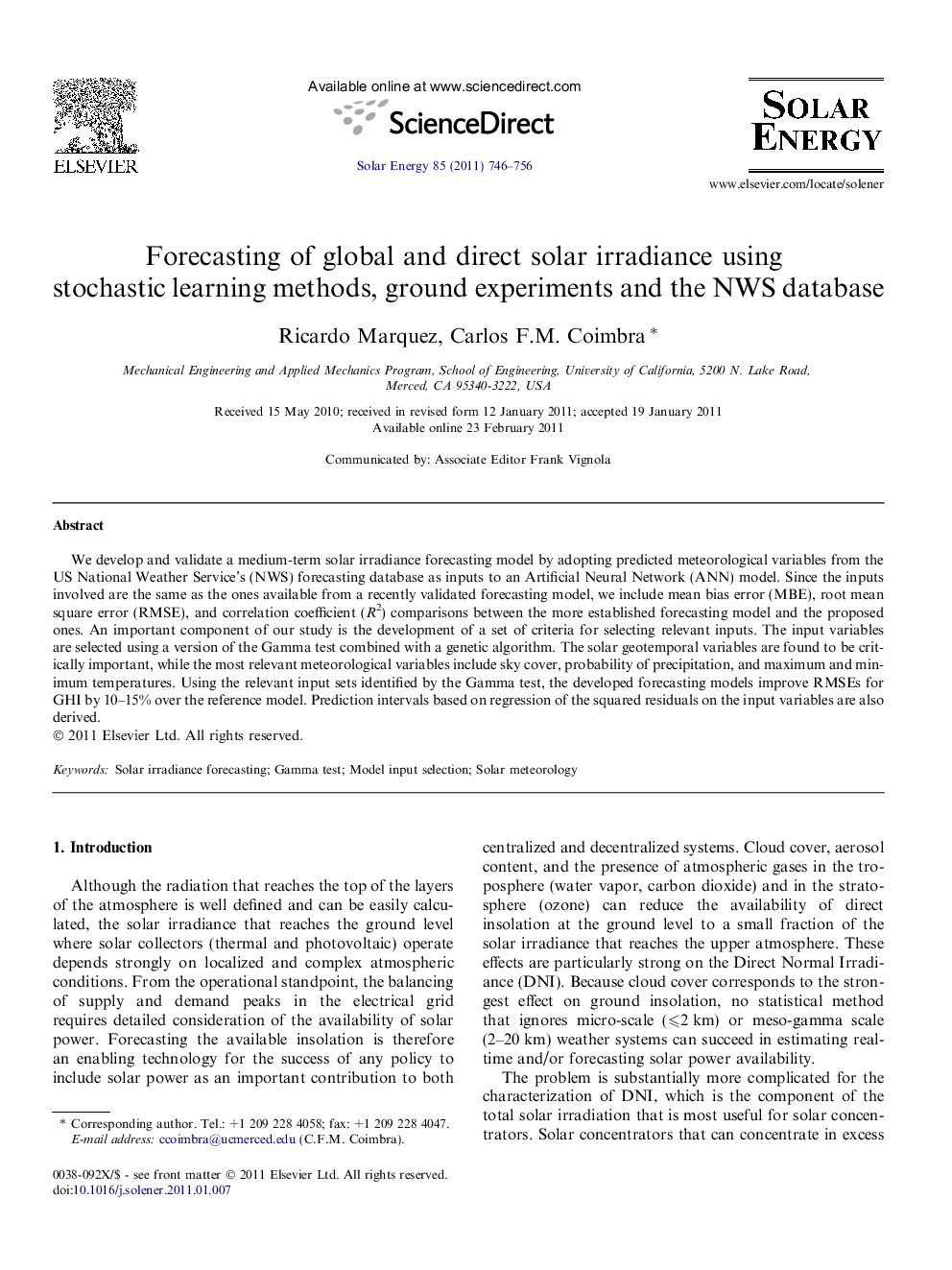| Article ID | Journal | Published Year | Pages | File Type |
|---|---|---|---|---|
| 1550745 | Solar Energy | 2011 | 11 Pages |
We develop and validate a medium-term solar irradiance forecasting model by adopting predicted meteorological variables from the US National Weather Service’s (NWS) forecasting database as inputs to an Artificial Neural Network (ANN) model. Since the inputs involved are the same as the ones available from a recently validated forecasting model, we include mean bias error (MBE), root mean square error (RMSE), and correlation coefficient (R2) comparisons between the more established forecasting model and the proposed ones. An important component of our study is the development of a set of criteria for selecting relevant inputs. The input variables are selected using a version of the Gamma test combined with a genetic algorithm. The solar geotemporal variables are found to be critically important, while the most relevant meteorological variables include sky cover, probability of precipitation, and maximum and minimum temperatures. Using the relevant input sets identified by the Gamma test, the developed forecasting models improve RMSEs for GHI by 10–15% over the reference model. Prediction intervals based on regression of the squared residuals on the input variables are also derived.
